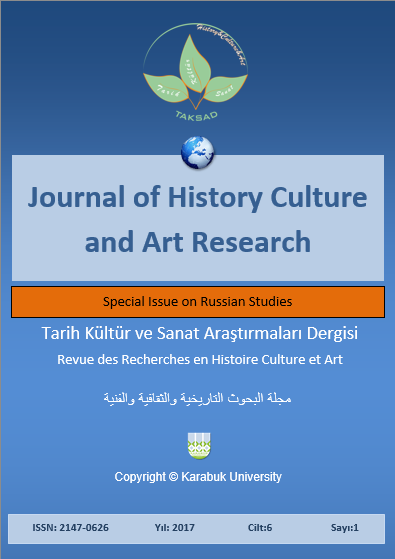Stylistic Features of Comment in Arabic Blogosphere
DOI:
https://doi.org/10.7596/taksad.v6i5.1290Keywords:
Internet linguistics, Arabic, Internet comments.Abstract
One of the most important issues in the study of the functioning of the Internet language is the definition of the features of each Internet genre presented in online communication, taking into account the linguocultural features of the language in question. This paper studies the genre of the Internet comments of the Arabic-speaking blogosphere and reveals its stylistic features. The most common goal of the comment is gratitude, followed by praise. We created a corpus of comments from blogs of various subjects, and then conducted the tagging, having identified the group to which we attributed a comment, depending on the subject and the communicative goal. With the help of the Lexico 3 software, the most frequent lexical units were identified, the lexical features of the comments were described, the main one being the widespread use of religionyms, and the relationship between the blog subject and the stylistic characteristics of communication was revealed. The article traces the correlation between the literary and colloquial functional style in the comments, and also draws a conclusion that the comments are of a conversational, informal character. The main devices of expressiveness that are characteristic for both network and pre-network communication were revealed, and the tendency of the analysts to observe in the comments a stable three-part composition (greeting, message, final formula). The influence of traditional Arabic rhetoric, as well as the epistolary genre, was preserved. The results of the paper can be used when studying other genres of Internet communication in Arabic and in comparative studies to create the linguistic software.
References
Bakhtin, М. М. (1996). Towards the Problem of Speech Genres. The Collected Works. Мoscow: Russian Dictionaries.
Barton D. & Lee, C. (2013). Language Online: Investigating Digital Texts and Practices. London: Routledge.
Chuprygina, L. А. (2013). Evolution of the Arabian Language in the Era of Cultural Globalization: From Diglossia to “The Golden Triangle”. Language and Culture, 16(3), 207-2015.
Crystal, D. (2001). Language and the Internet. Cambridge: Cambridge University Press.
Herring, S. C. (2004). Computer-mediated discourse analysis: An approach to researching online behavior. In S.A. Barab, R. Kling, & J.H. Gray (Eds.), Designing for virtual communities in the service of learning (pp. 338-376). New York: Cambridge University Press.
Ivanov, L. Y. (2000). Language and Internet: Notes of the Linguist. Faq nо Internet. World Wide Web [www]. Answers to Questions: The Collected Articles about the Internet Language. Мoscow. URL: http://www.faq-www.ru/lingv.htm (Accessed on: 23.03.2017)
Pepe, T. (2012). Improper Narratives: Egyptian Personal Blogs and the Arabic Notion of Adab. Lingue e Letterature d’Oriente e d’Occidente, 1(1), 547-562. DOI: http://dx.doi.org/10.13128/LEA-1824-484x-12478
Ramsay, G. (2012). What kind of Arabic and why? Language in Egyptian blogs. Orientalia Suecana, 61, 49-87. URL: http://www.diva-portal.org/smash/get/diva2:635257/FULLTEXT02.pdf (Accessed on: 20.02.2014).
Shchipitsina, L. Y. (2009). The Genres of Computer-Mediated Communication. Arkhangelsk: Pomor University.
Spirkin, А. L. (2009). Theory of Functional-Stylistic Stratification of Modern Arabic Language. Thesis for Doctor of Philology. Мoscow.
Downloads
Published
How to Cite
Issue
Section
License
All papers licensed under Creative Commons 4.0 CC-BY.- Share — copy and redistribute the material in any medium or format
- Adapt — remix, transform, and build upon the material for any purpose, even commercially.
Under the following terms:
Attribution — You must give appropriate credit, provide a link to the license, and indicate if changes were made. You may do so in any reasonable manner, but not in any way that suggests the licensor endorses you or your use.
- No additional restrictions — You may not apply legal terms or technological measures that legally restrict others from doing anything the license permits.







